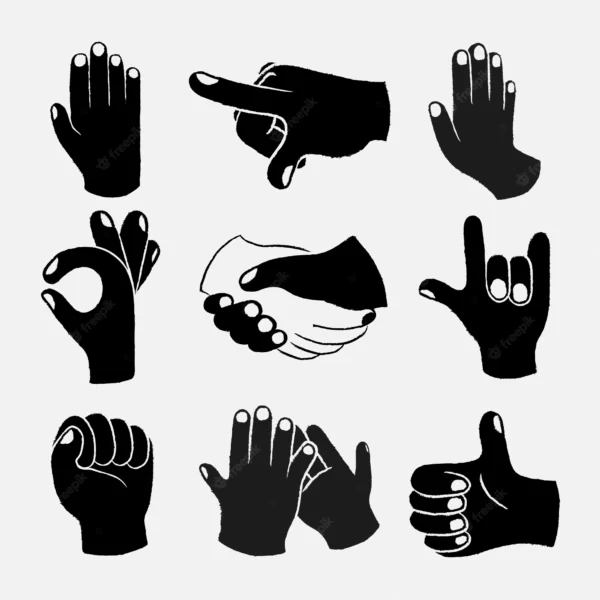Body Language
When we talk about body language, we might first think of silent shows like Charlie Chaplin’s shows. Charlie Chaplin was one of the pioneers of conveying concepts through body language. But this matter is not limited to the performance of this kind of shows. In our daily communication, we constantly use this feature in front of the people we deal with.
For example, holding hands against a person with whom we do not agree, shows our position of opposition.
One of the most important situations where learning body language helps us succeed is in the field of negotiation. Understanding the negotiator’s body language will be very helpful in identifying the other party’s honesty, deception, fear and confidence.
Precedence of Body Language Over Verbal Communication
We have body language with us since childhood. Before every conversation, a child tries to convey concepts to others with gestures. These can include crying, laughing, grabbing, letting go, closing eyes, lip and mouth movements, etc. Over time, we realize that even in public meetings with friends or even family members, we use our body language more than verbal communication. Such as waving your hand to say goodbye or raising your hand to say hello, even shaking your head in different directions to confirm or deny the words of others. Therefore, the use of body language has a long history and is not limited to a specific and temporary period.
Body Language in Negotiations
The importance of this issue in negotiations is that only 50% of the transfer of concepts during negotiation is verbal and the rest of the content is transferred through body language. For example, continuous blinking, sitting pattern, ear scratching, etc., convey some inner concepts to us that cannot be understood from people’s words. Here are some examples of body language during negotiation:
1. Facial Expression
By looking at people’s faces, we can understand their satisfaction or dissatisfaction with the negotiations and agreements made. By looking closely at people’s eyes, the level of their happiness or sadness can also be recognized. Sometimes people’s inner anger can also be seen on their faces; Some in the form of knotted eyebrows and some in the form of reddened faces.
2. Body Movements
This is the main feature of body language, which can be manifested as sitting, walking, hand movements while speaking, leaning towards the other party while speaking, or withdrawing from the other party.
3. Gesture
This item refers to the way of sitting, looking, placing the hands and things like that. Just like when we are going to take a picture; The way we sit, the way we look at the camera, the position of our hands on our body or the surfaces around us. All these factors can convey a message to the other party. Even intentional or unintentional imitation of the other party in this regard can also express our agreement with him/her and his/her point of view on the subject of negotiation.
4. Active Listening
To receive the verbal and non-verbal communication of the other party, we must first be able to be a good listener. Shaking the head, a focused look and repeating the sentences of the other party to convey the concept that we have listened to his words very carefully can create a kind of confidence in him/her.
Positive Points in Body Language
1. Standing Straight:
This point causes us to convey our sense of self-confidence to others. Standing straight and holding your head up while speaking also conveys a sense of power, winning and determination to the other party.
2. Eye Contact:
Making eye contact conveys a sense of honesty and trust to others. Of course, it should be noted that making eye contact more than necessary and reasonable may make the other party feel uncomfortable.
3. Using Hand Gestures:
It means positive use of hands. Positive usage can include counting, naming and pointing. Also, we should avoid the negative use of hand gestures, that is, gestures that induce nervousness.

4. Smile
Having a smile conveys a sense of calmness and friendliness and can even make others feel more comfortable with us in a discussion.
Up To Sum
Body Language is one of the most important techniques that we should try to learn in addition to developing the skills of expression and learning the negotiation technique. Learning this ability increases the speed of recognizing people’s true motivation and makes our decisions faster.


